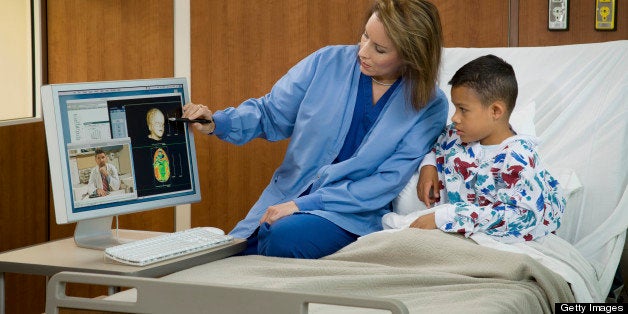
As a parent, we all understand that the health of our child takes precedence over economic concerns, geographic distance, and just about any barrier you can name. Many parents know the stress of finding the right doctor to treat a child's illness, and the difficulties involved in traveling to see that one specific doctor. For critically ill children, the long wait to see a pediatric specialist can be devastating.
About 1 million children in California have ongoing physical, behavioral, mental, or emotional conditions that can affect their ability to function and participate in activities important to their development and, in some cases, can shorten their lives. According to a recent report published by the Lucile Packard Foundation for Children's Health, these children with special health care needs use more health care services than other children and account for more than 40 percent of all health care cost among children nationwide, despite making up only 16 percent of the U.S. child population. Though advances in medical care have extended and improved the lives of millions of children, more than four in five of children with special health care needs still fail to receive one or more basic aspects of quality health care, statewide and nationally.
The beauty of today's virtual technologies is that we now have the ability to erase those barriers of distance. High-definition video consultations are now connecting families to specialized care right in their own communities. By combining human and technology networks involving mobile, cloud and video technologies we are bringing systemic change to children's health care. And these technologies also allow providers to virtually connect and collaborate to review cases, make referrals and share medical knowledge.
By equipping health care organizations with telehealth technologies, we have the opportunity to cultivate healthy communities. These collaborative technologies are paving the way for change by building human and technology networks that promote better health through improved access, as well as scalable solutions that can be replicated across diverse geographies. With an intelligent network that listens, learns, and responds, health care institutions and practitioners are witnessing innovations that transform care delivery on an entirely new scale. At the same time, information and communication technology is empowering patients to receive the care they need, when and where they need it.
Cisco's Connected Healthy Kids corporate social responsibility program is transforming children's care in the United States, China, Jordan, Brazil and the United Kingdom through technology. By extending the reach of pediatric specialists, we hope to:
- Enable increased patient/physician access to pediatric care
- Expand knowledge and collaboration between physicians and organizations
- Support personalized treatments
- Build children's healthcare capacity on a global scale
Watch this video to see highlights of this program around the world.